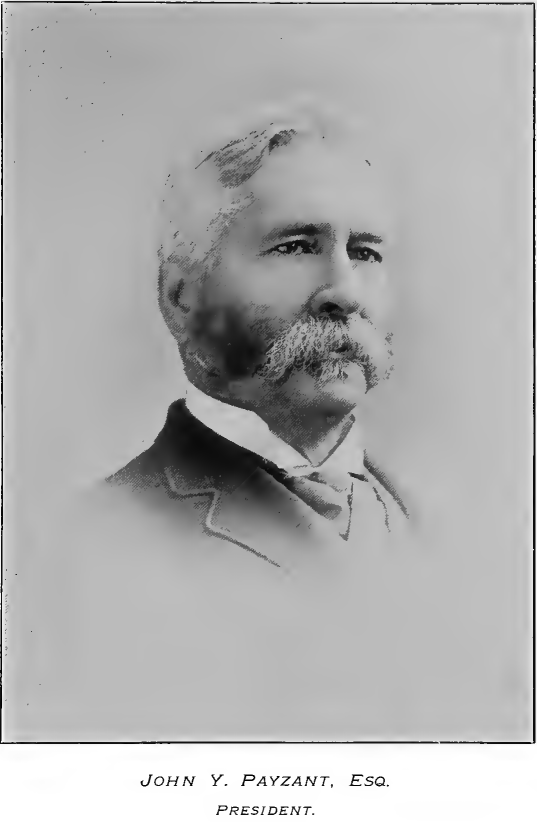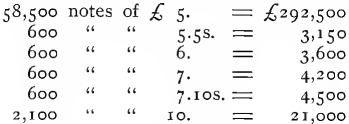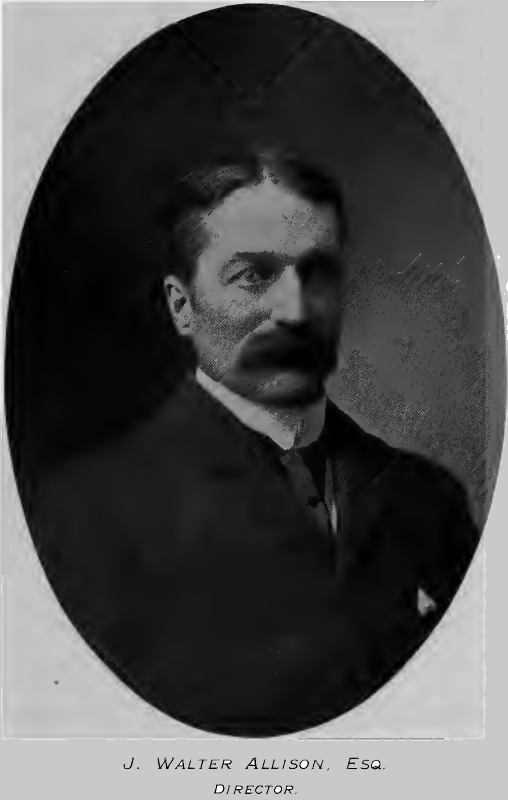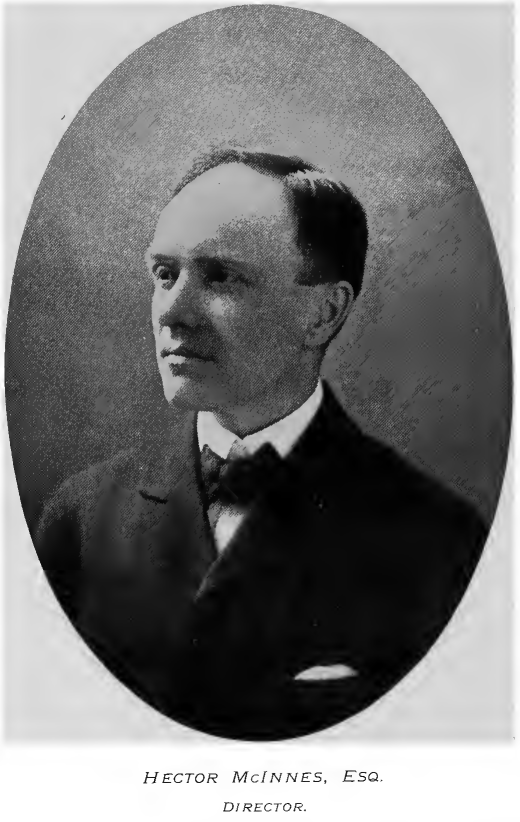|
HEAD OFFICE, HALIFAX, N.
S.
GENERAL MANAGER’S OFFICE, TORONTO.
DIRECTORS.
John V. Payzant, President.
Charles Archibald, Vice-President.
R. L. Borden, G. S. Campbell, J. Walter Allison, Hector McInnes.
H. C. McLeod, General Manager.




Dawn of Banking in Nova
Scotia.
WE are told in Murdoch’s History of Nova Scotia that the first effort to
establish a Bank in Halifax was made in the spring of 1801—or just a
century ago. Sir John Wentworth, the Lieutenant-Governor, wrote to Mr.
Bernard, the Provincial Agent in London, under date of April 10th, 1801,
that £50,000 had been subscribed for this purpose in one hour—that
^100,000 would be subscribed if necessary. He says: “Ten years agone
there did not exist £6,000 in the Province that could by any possibility
have been applied to any one point. A copy of the plan as agreed on in
March, 1801 has been lent me by John Duffus, Esq.” The project
contemplated a capital of £50,000, in shares of £100 each, capable of
being increased to £100,000. There were to be seven directors. The
Cashier was to have £300 a year salary, besides house rent and fuel.
They were to issue paper money and discount notes. “No other Bank“ to be
established by any future law of the Province during the continuance of
the said Corporation.” A committee was named on the indorsement, viz.:
Edward B. Brenton, William Forsyth, Foster Hutchinson, Lawrence
Hartshorne, James Foreman, James Fraser and Captain John Beckwith. The
demand of a monopoly was fatal to the success of the incorporation bill,
and it was accordingly deferred till next Session by the House of
Assembly, on 16th June, 1801. In 1811 the Halifax Committee of Trade
published a project for a provincial joint stock bank with a capital of
£50,000, but as no proceedings relating thereto appear in the records of
the Assembly, it is probable the share list was not filled up. In 1822
and 1825 bills were introduced to incorporate banks, and both failed; On
the 3rd September of the latter year the Halifax Banking Company,
otherwise known as Cogswell and Company, opened its doors as a private
firm. It had no Act of Incorporation or Charter. The partners who signed
the public notice were : Henry H. Cogswell, President; William Pryor,
Vice-President; Enos Collins, James Tobin, Samuel Cunard, John Clark,
Joseph Allison and Martin Gay Black. The new banking firm met with a
considerable degree of favor, but as their prosperity increased their
methods became autocratic. Their notes were made “payable in gold, or
silver, or Province paper”; .the public construed this to mean that the
holders were entitled to whichever they desired, but found in actual
practice that they could get only that which the Bank chose to give
them. Five partners out of the eight who were concerned in the Bank were
members of the Executive and Legislative Councils, forming, with their
relatives, a majority in both.
The monopoly of the Halifax banking company was not long borne in
silence; a series of bitter attacks was made upon its methods through
the columns of the newspapers; every commercial mishap was laid at its
doors; and adverse feeling finally crystallized in a scheme for the
establishment of the “Bank of Nova Scotia.” The subscription list, a
photographic reproduction of which appears on the following pages, was
opened on 1st February, 1832; the accompanying petition, and, in due
course, the incorporation bill, were introduced into the House of
Assembly by William Lawson, one of the members for the County of
Halifax.
It would appear that the proposed charter was a modified copy of that
thrown out in 1801, and closely resembled that of the Bank of New
Brunswick, established in 1820; but instead of seeking a monopoly it
this time appeared as a relief from that evil. The account of the
political struggle for incorporation, which appears on page 20, is
quoted from “Reminiscences of Our Native Land” published in the Halifax
Acadian Recorder: it is compiled from original records, including that
newspaper’s parliamentary reports of the time.
The Struggle for
Incorporation
The Act of Incorporation
The Meeting of the
Coffee House
The Bank Commences
Business
Chronological
Notes, 1832 to 1870
The Forman
Defalcation
Restoration
The Fiftieth
Anniversary
Progress and
Expansion
Legislation
Note Circulation
Directors of the
Bank 1832 to 1901
List of
Shareholders as at January 1901
General Statement
of the Bank of Nova Scotia 31st December 1900
More recent history of the bank can be found here |
